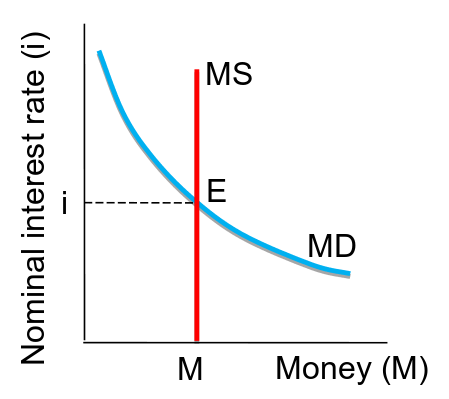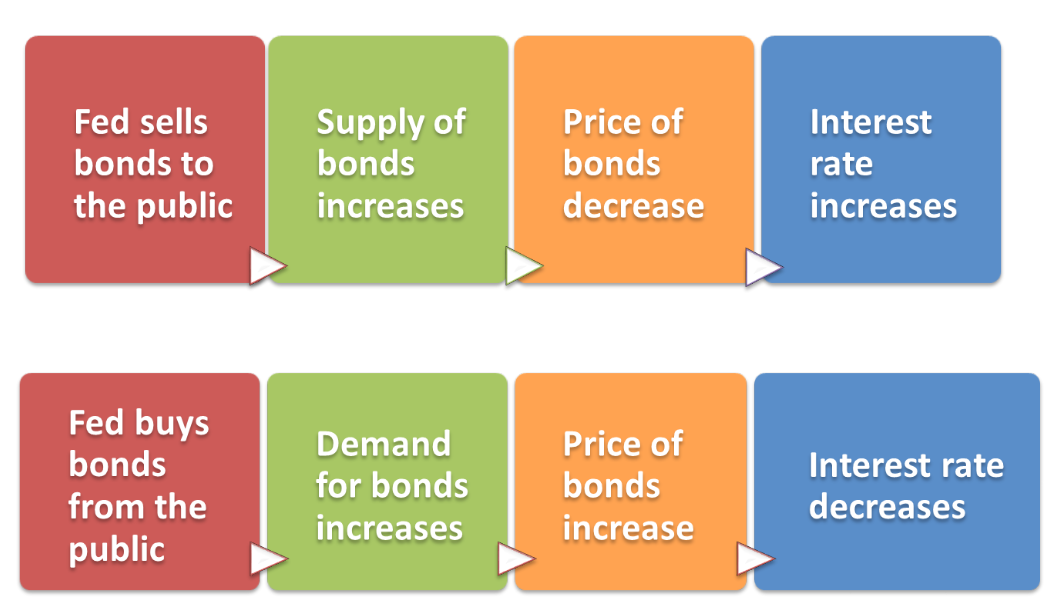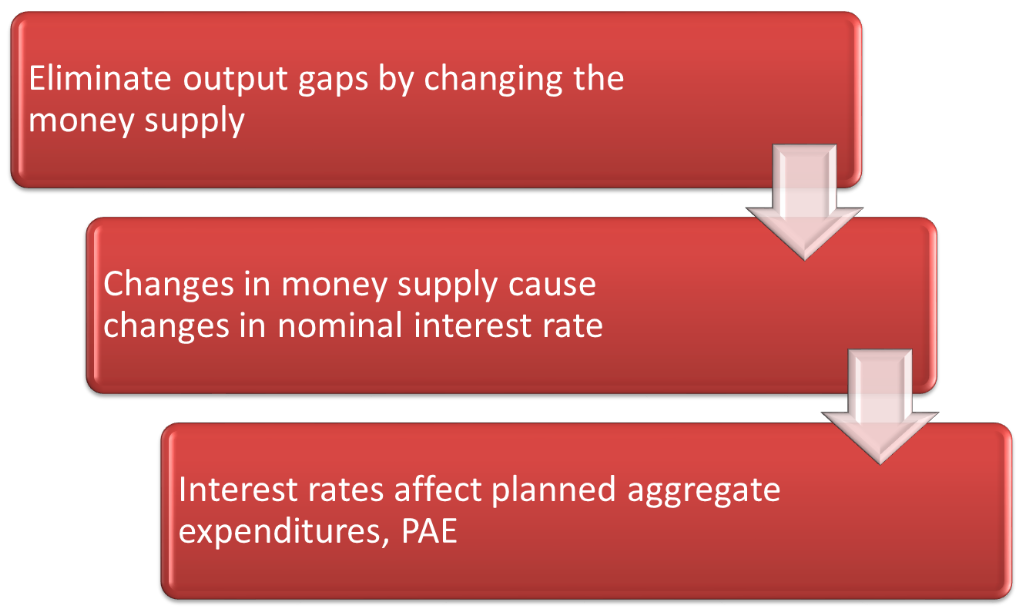Stabilizing the Economy: The Role of the Fed
Fed and Monetary Policy
- Stabilization policies are govt policies affecting Planned Aggregate Expenditures
- Conducting monetary policy is Fed’s primary task
- Monetary policy is quick and responsive tool as it can be changed by FOMC, while fiscal policy can only be changed by legislative action
- FOMC changes money supply through monetary policy changes by modifying short-term nominal interest rates, or the Federal Funds Rate
- This is equivalent to setting the money supply since
- Value of money supply implies given nominal interest rate
- Vale of nominal interest rate implies given money supply
- Nominal interest rate is opportunity cost of holding money
Fed and Interest Rates: Basic Model
- Demand for money is amount of wealth a nation’s people wish to hold in form of money
- Equilibrium in money market (i.e money supply = money demand) determines equilibrium nominal interest rate, equilibrium money supply/demand
National Demand for Money
- Nominal interest rate (i) - negative relationship
- Higher interest rate, higher opp. cost of holding money, so lower demand for money
- Real income or output (Y) - positive relationship
- Higher income, greater quantity of money demanded
- Price level (P) - positive relationship
- Higher price level, greater quantity of money demanded
- Rightward shift in demand curve for money can be caused by
- Increase in real GDP
- Increase in price level
- Tech. changes/improvements
- Increase in foreign demand for dollars
Supply of Money
- Fed primarily controls money supply with open market operations
- Supply of money is vertical line in figure below
- Fed wants to increase money supply to new M′
- This establishes a new equilibrium with lower interests, convincing market to hold the new larger amount of money
 Money supply
Money supply
Fed Targets Interest Rate
- Sets interest rate because closely tied to bank reserve levels
- Policy also announced in interest rate because
- Public not familiar with “money supply”
- Interest rate affects planned spending and level of economic activity
- Interests rates easier to monitor than money supply itself
- The Fed can control real interest rates in the short run
- Inflation does not adjust very quickly, and real interest rate r=i−π, where π is inflation rate, so i has heavy impact on r
- But over long run inflation rate will change
 Fed bond control
Fed bond control
Excess Reserves
- Banks could hold excess reserves (reserve amounts above legal minimum), reducing Fed’s ability to control money supply through open market operations
- Banks might hold these reserves in times of uncertainty
Quantitative Easing
- Quantitative easing is expansionary monetary policy where Fed buys long-term financial assets (like mortgage back securities, long term treasuries)
- Goal is to increase long-term interest rates, as they don’t always move with the Federal Funds Rate
The Fed and the Economy
 Fed and economics
Fed and economics
Monetary Policy
 Monetary policy 1
Monetary policy 1
 Monetary policy 2
Monetary policy 2
Fed Fights Inflation
- Expansionary gaps can lead to inflation
- Fed tries to close these gaps by raising interest rates, causing a decrease in consumption, PAE, and equilibrium output’
Inflation and the Stock Market
- Bad news about inflation generally causes stock prices to fall
- Investors anticipate Fed will increase interest rates, meaning
- Economic activity slows, lowering firm’s sales and potentially profits
- Higher interest rates makes non-stock financial instruments more attractive
- Reduces demand for stocks and thus their price drops
Fed and Stock Market
- Has limited ability to manage stock market
- Monetary policy not well suited to addressing asset bubble (increase in asset price over their market values)
- Fed could slow economy and raise interest rates, but might result in recession
Taylor’s Rule
- Describes Fed’s behavior, so called policy reaction function
- Written as r=0.01+0.5Y∗Y−Y∗+0.5π where r is real interest rate and the fraction is output proportional to potential GDP
- Maps inflation rate π and output gap to real interest rate that Fed should set
- Useful simplifying assumption is that Fed’s choice of real interest rate depends only on rate of inflation




